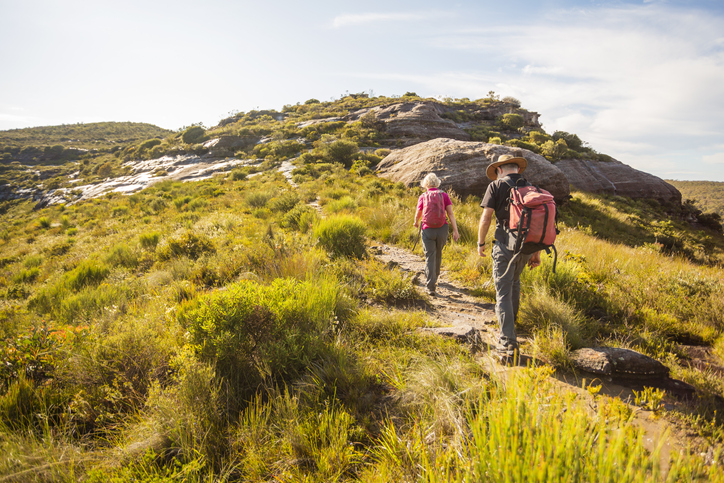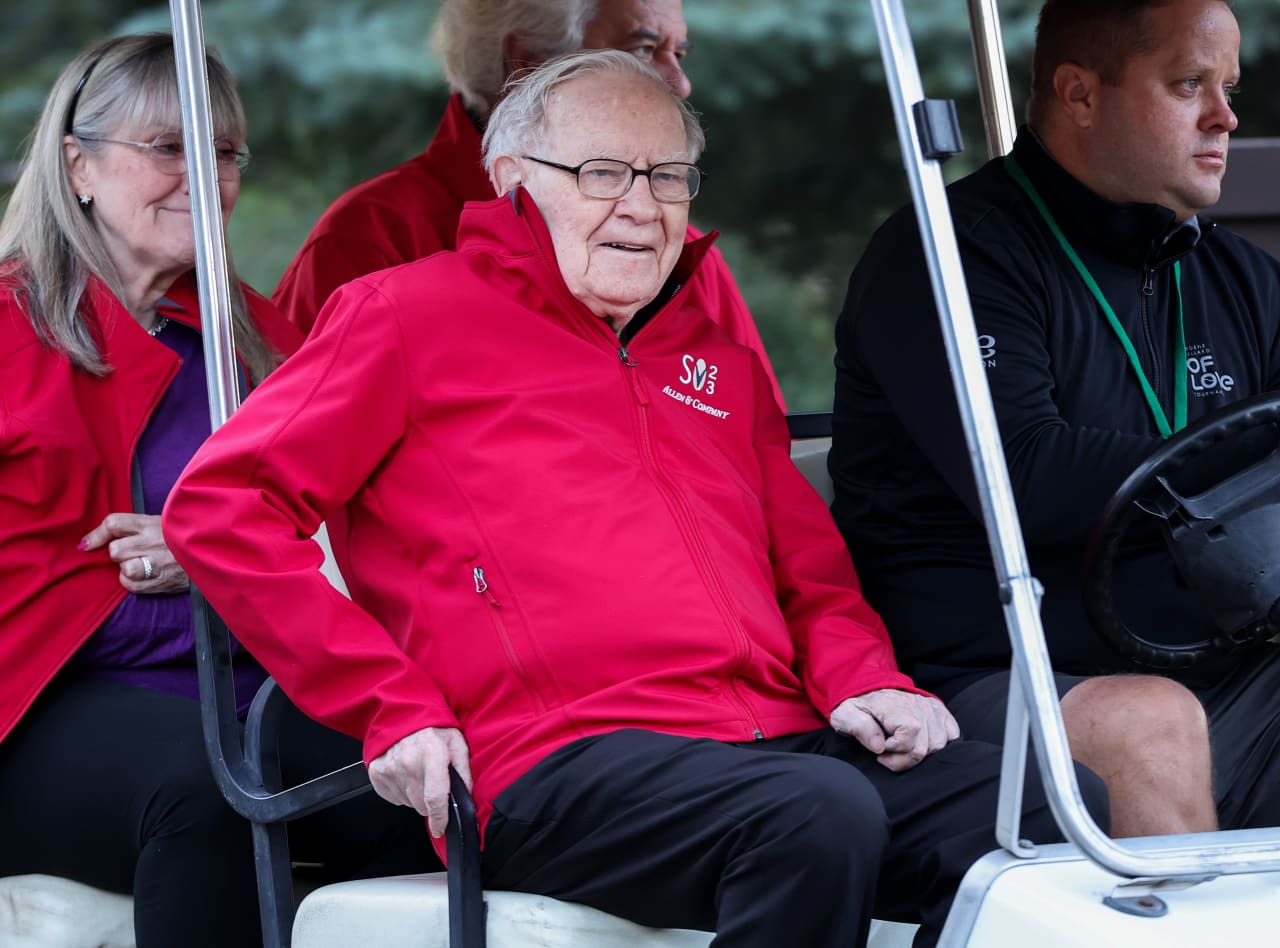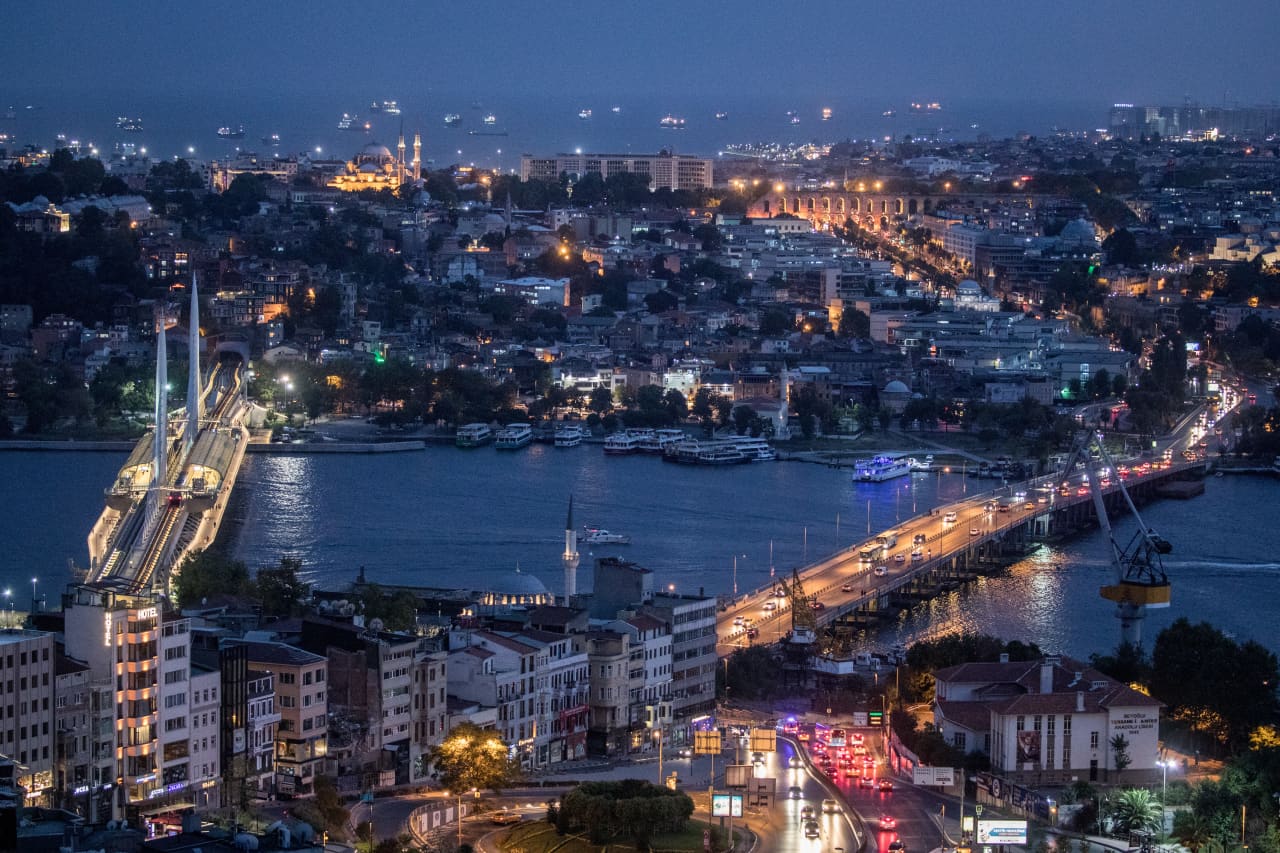In Retirement, We Have More Time Than Ever. But We Want to Use It Wisely.
We have fantasised about this moment for decades. The trick is learning how to savour it.
The first year in retirement is often the most difficult. But it also can be the most crucial, setting the stage for how you’ll fill the years ahead—both financially and psychologically. Stephen Kreider Yoder, 65, a longtime Wall Street Journal editor, joined his wife, Karen Kreider Yoder, 66, in retirement in September. In this monthly Retirement Rookies column, they are chronicling some of the issues they are dealing with in their first year, offering their different perspectives on what can be a confusing transition.
Steve
For the first time in many years, time isn’t money.
That was never more clear one afternoon earlier this year when we were gazing down at the Mediterranean Sea while sipping coffee in a cafe in the town plaza in Bejaia, Algeria. We had no fixed plans for the day or the next week—just as planned.
We suddenly have time in abundance, now that we’re both retired, and we’re learning how to spend this currency that for decades has been so scarce. We can now linger where we want to be and dally over what we want to do.
Algeria was an ideal place to test this new reality. We had visited in 2019, but could afford only two weeks, what with full-time jobs—far too short for a country roughly 3.5 times the size of Texas. “We need more time there,” I said as we flew home.
This year, we could take nearly twice as long to immerse ourselves in what the country offered: a green coastal region that gives way to the golden Sahara; a mosaic of Arab, Berber, French and other cultures; Roman Empire ruins; good food and wine; some of the most hospitable people we’ve met.
We’ve been fantasising about this time in life since we got married. For decades, time was a rare commodity, and we had to spend a lot of money to acquire it. We paid an absurd price for a house in San Francisco, partly to limit our commutes. We often hired others to do tasks I enjoyed, like fixing our cars or restoring the trim on our Victorian.
“We need more time” was our constant lament, at no time more than during travel. We would shoehorn several countries into two-week tours. We liked to travel abroad on a low budget—it got us closer to the reality of wherever we were—but that took time, and we often didn’t have the luxury.
We have it now. Earlier this year, we rode the Amtrak California Zephyr to Iowa, rather than flying, to see my parents. It was about 48 hours each way, but what was the hurry? We got beds, three meals a day and a rolling display of Western America. We extended our stay with Mom and Dad to a full week.
Back home, I fired up the metal lathe to fine-tune a bearing-cup press I had made earlier—a bike tool that worked fine but which I had great fun fussing with for hours to refine it. I’ll soon solicit bids for scaffolding, so I can start restoring trim.
It’s beginning to occur to us: By saving money assiduously during our 44 years of marriage, we weren’t putting away only funds. We were also accumulating time to spend in retirement.
Money, at long last, is time.
Karen
I’ve never been more aware of the finite nature of time. We’re rich with it now, but there’s no guarantee how long those riches will last. At best, thanks to the longevity that runs in our families, we may have 30 good years of life left. That feels like a long time—and no time at all.
So I’ve been thinking: Maybe we should be budgeting our time like we budget money.
Should I, for instance, spend some of my newfound wealth of time on things I’ve loved to do all my life but had to cut back on while I was working? During the busy years of my career, I continued to make quilts, but had to leave many undone. I baked my own granola and whipped up many meals for friends, but found myself ordering out or picking up prepared foods from the grocery store to save time.
Yet now that I have the luxury of time, the opportunities to fill it have also grown. And that means I still find myself weighing how to spend it—and when to keep spending money instead. I still love to create things, for instance, but would I rather sew an original outfit from scratch or shop for a less-original affair and bank the time? We have time to do housecleaning now; does that mean we should stop paying someone else to do it once a month?
These aren’t easy questions. As a result, we’re talking about looking at all the large time expenditures on our list—travel, house work, volunteering, organising photos—and laying them out on an annual budget. That will help us use our time more wisely.
As we talked about in our last column, we also need to do a better job savouring—as opposed to just running through—the time we have. That hit home on our trip to the Algerian Sahara this year. We had blocked off a week to explore the desert, far longer than we would have during preretirement travel. We could finally take a leisurely pace, we told ourselves.
Yet we couldn’t shake the old urge to make each hour pay off. My question when we arrived the first night: “When should we be ready for breakfast in the morning?”
Our Tuareg guide, Habib, laughed. “You get up when you want,” he said. “In the desert, slowly, slowly.”
That became our mantra for the next days as we camped each night in a different swath of the wilderness. We sat around a low table for our morning coffee and baguette with fig jam. “Slowly, slowly,” Habib would say, and we would repeat it after him.
“Slowly, slowly,” he cautioned as we set off scrambling over rocks toward ancient pictographs. After lunch under a cool tree, we would chat and read and nap. “Slowly, slowly,” we would chant, and again in the evening as Habib stoked a small fire to heat tea, pouring it back and forth between two pots until it foamed into a thick, sweet brew. We brought that mantra home from Algeria. We’ve got time now, and if we budget it carefully, we can afford to spend it slowly, slowly.
 Copyright 2020, Dow Jones & Company, Inc. All Rights Reserved Worldwide. LEARN MORE
Copyright 2020, Dow Jones & Company, Inc. All Rights Reserved Worldwide. LEARN MORE
This stylish family home combines a classic palette and finishes with a flexible floorplan
Just 55 minutes from Sydney, make this your creative getaway located in the majestic Hawkesbury region.
As Paris makes its final preparations for the Olympic games, its residents are busy with their own—packing their suitcases, confirming their reservations, and getting out of town.
Worried about the hordes of crowds and overall chaos the Olympics could bring, Parisians are fleeing the city in droves and inundating resort cities around the country. Hotels and holiday rentals in some of France’s most popular vacation destinations—from the French Riviera in the south to the beaches of Normandy in the north—say they are expecting massive crowds this year in advance of the Olympics. The games will run from July 26-Aug. 1.
“It’s already a major holiday season for us, and beyond that, we have the Olympics,” says Stéphane Personeni, general manager of the Lily of the Valley hotel in Saint Tropez. “People began booking early this year.”
Personeni’s hotel typically has no issues filling its rooms each summer—by May of each year, the luxury hotel typically finds itself completely booked out for the months of July and August. But this year, the 53-room hotel began filling up for summer reservations in February.
“We told our regular guests that everything—hotels, apartments, villas—are going to be hard to find this summer,” Personeni says. His neighbours around Saint Tropez say they’re similarly booked up.
As of March, the online marketplace Gens de Confiance (“Trusted People”), saw a 50% increase in reservations from Parisians seeking vacation rentals outside the capital during the Olympics.
Already, August is a popular vacation time for the French. With a minimum of five weeks of vacation mandated by law, many decide to take the entire month off, renting out villas in beachside destinations for longer periods.
But beyond the typical August travel, the Olympics are having a real impact, says Bertille Marchal, a spokesperson for Gens de Confiance.
“We’ve seen nearly three times more reservations for the dates of the Olympics than the following two weeks,” Marchal says. “The increase is definitely linked to the Olympic Games.”

Getty Images
According to the site, the most sought-out vacation destinations are Morbihan and Loire-Atlantique, a seaside region in the northwest; le Var, a coastal area within the southeast of France along the Côte d’Azur; and the island of Corsica in the Mediterranean.
Meanwhile, the Olympics haven’t necessarily been a boon to foreign tourism in the country. Many tourists who might have otherwise come to France are avoiding it this year in favour of other European capitals. In Paris, demand for stays at high-end hotels has collapsed, with bookings down 50% in July compared to last year, according to UMIH Prestige, which represents hotels charging at least €800 ($865) a night for rooms.
Earlier this year, high-end restaurants and concierges said the Olympics might even be an opportunity to score a hard-get-seat at the city’s fine dining.
In the Occitanie region in southwest France, the overall number of reservations this summer hasn’t changed much from last year, says Vincent Gare, president of the regional tourism committee there.
“But looking further at the numbers, we do see an increase in the clientele coming from the Paris region,” Gare told Le Figaro, noting that the increase in reservations has fallen directly on the dates of the Olympic games.
Michel Barré, a retiree living in Paris’s Le Marais neighbourhood, is one of those opting for the beach rather than the opening ceremony. In January, he booked a stay in Normandy for two weeks.
“Even though it’s a major European capital, Paris is still a small city—it’s a massive effort to host all of these events,” Barré says. “The Olympics are going to be a mess.”
More than anything, he just wants some calm after an event-filled summer in Paris, which just before the Olympics experienced the drama of a snap election called by Macron.
“It’s been a hectic summer here,” he says.

AFP via Getty Images
Parisians—Barré included—feel that the city, by over-catering to its tourists, is driving out many residents.
Parts of the Seine—usually one of the most popular summertime hangout spots —have been closed off for weeks as the city installs bleachers and Olympics signage. In certain neighbourhoods, residents will need to scan a QR code with police to access their own apartments. And from the Olympics to Sept. 8, Paris is nearly doubling the price of transit tickets from €2.15 to €4 per ride.
The city’s clear willingness to capitalise on its tourists has motivated some residents to do the same. In March, the number of active Airbnb listings in Paris reached an all-time high as hosts rushed to list their apartments. Listings grew 40% from the same time last year, according to the company.
With their regular clients taking off, Parisian restaurants and merchants are complaining that business is down.
“Are there any Parisians left in Paris?” Alaine Fontaine, president of the restaurant industry association, told the radio station Franceinfo on Sunday. “For the last three weeks, there haven’t been any here.”
Still, for all the talk of those leaving, there are plenty who have decided to stick around.
Jay Swanson, an American expat and YouTuber, can’t imagine leaving during the Olympics—he secured his tickets to see ping pong and volleyball last year. He’s also less concerned about the crowds and road closures than others, having just put together a series of videos explaining how to navigate Paris during the games.
“It’s been 100 years since the Games came to Paris; when else will we get a chance to host the world like this?” Swanson says. “So many Parisians are leaving and tourism is down, so not only will it be quiet but the only people left will be here for a party.”
This stylish family home combines a classic palette and finishes with a flexible floorplan
Just 55 minutes from Sydney, make this your creative getaway located in the majestic Hawkesbury region.






















